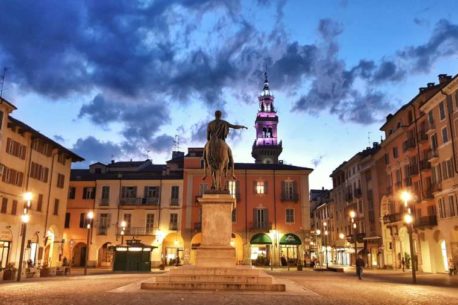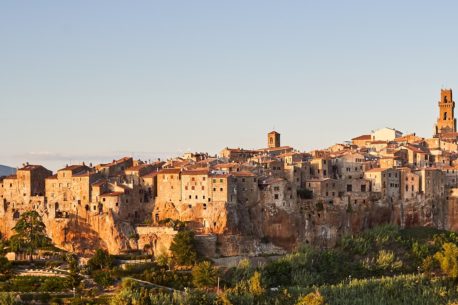
There are sources mentioning the presence of Jews in the city of Verona as back as the VI century AD. Though possible, the first certain sources show that by the XIII century the number of Jews residing in Verona was quite sizeable. At that time a Rabbinical Court was active and two famous Rabbis both born in Verona were practicing, Rabbi Eliezer da Verona and Rabbi Hillel da Verona. Moreover, as a further sign of how well integrated the Jews were at that time, Immanuel Romano, also known as Manuelo Giudeo, a famous scholar and poet who wrote in Hebrew, Latin, and vernacular was active at the Scaliger Court of Verona at the same time of Dante Alighieri as well as also in the Marche region (see our specific Tour to the Marche).
Generally speaking, during the following centuries, the Jewish population constantly grew also due to the influx of many Ashkenazi Jews escaping persecutions in Germany and nearby areas. They all lived in what was a Jewish neighbourhood in the downtown area around the famous Piazza delle Erbe, the Market Square which retains even today this function. No ghetto was established yet, though starting from 1422, Jews were forced to wear a distinctive sign: first a yellow round piece of fabric sewn on their coats, and later a yellow hat for the men and a yellow veil for the women. In 1499 they were expelled to be admitted again in the city by the year 1516, and in 1604 the ghetto was established following the request of a powerful local archbishop. Between then and the abolition of the ghettos throughout Northern Italy at the end of the XVIII century as a consequence of the Napoleonic invasion, three major events hit the city of Verona and its Jewish population: the black plague in 1630, an uprising against the Jews in 1745, and a raging fire that destroyed most part of the ghetto area.
Our tour of Jewish Verona will take you in the charming main sights of the old Jewish area, later to become the ghetto, that was remodelled 100 hundred years ago, but that can still show some of its original features, such as the “Case Torri” (The Tower Houses), so called because they were extended in height in order to accomodate the growing population in an area like the ghetto where no new constructions were allowed. A must will also be the visit to the monumental Synagogue, one of the biggest in Northern Italy, with its fascinating architecture of rare beauty and the original furniture and decorations of the XIX century preserved in their entirety.

Nowadays only two Jewish families still reside in Casale Monferrato. However, this small town in the countryside of the Piedmont region once had a numerous and prosperous Jewish community that had started settling here since 1492. In fact this was the year marking the expulsion of the Jews from Spain, some of which, for some […]

The small hamlet of Pitigliano is also known as “the small Jerusalem”, a clear indication of the fact that for many centuries the Jewish population was an integrated and welcomed part of the village and welcomed by the local population. The walls surrounding Pitigliano are of Etruscan origin and have been expanded and strengthened in […]